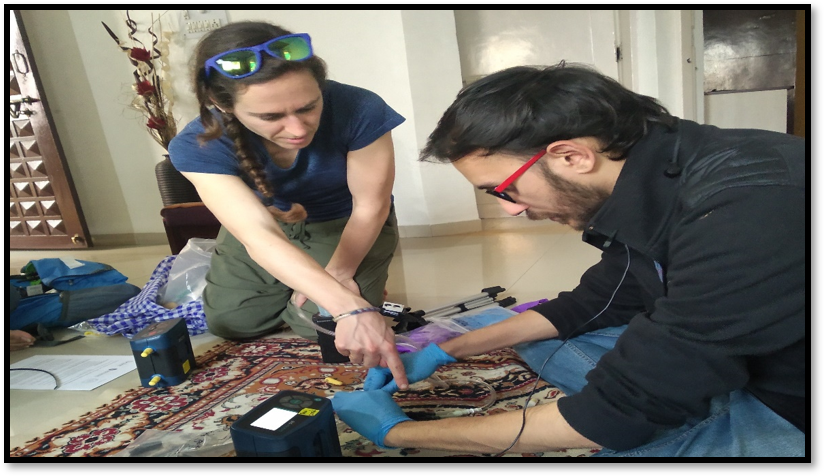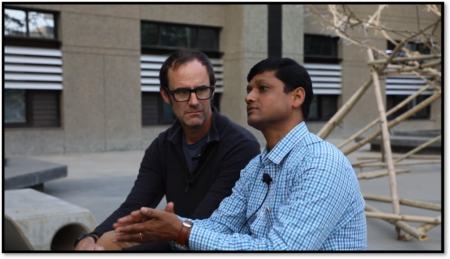
“Through basic science literacy, people can understand the policy choices we need to be making. Science and communication are some of the fundamentals we need to address.” – James Murdoch, British-American businessman and Chief Executive Officer of 21st Century Fox
Hola Amigos! How is your second month of the year 2020 going? Geared up for another year of adventures in your careers and lives? I thought so! How about you take a small relaxing break amid all your preparations, and I tell you something more about the collaborative research studies, which are one of the hottest topics of today.
Now-a-days, the world is aiming to acquire practical and feasible solutions to the burning issues of the present times through interdisciplinary and multidisciplinary research. It is a contrast from the past, where we probed such questions through the study of a single discipline. The last few years have seen scientists and scholars utilize multiple-level engagements among different branches of research to explore the unknown. This amalgamation is not only on a national level but on international grounds as well and is leading to the betterment of the society in several ways.
IIT Gandhinagar understands the importance of collaborative research as well as its effective communication with the general public. Crisp science communication will eventually result in discussions among scientists, researchers, policy-makers, and society across the globe – something that is essential for society-oriented advancements in all possible fields and areas. As an effort to pique the interest of people in exploring science and research for the benefit of all, today, I will share two research stories from IITGN, which are an excellent example of successful international research collaborations.
The first research story addresses the critical relationship between air pollution and solar power generation. Yes, folks, you heard it right! According to the latest study by an interdisciplinary team of researchers from IIT Gandhinagar and Duke University, these seemingly unrelated elements have a strong association.
Were you aware that high concentrations of dust and particulate matter can reduce the generation of solar power by a considerable 40%? In this way, on the one hand, poor air quality is leading to annual global losses up to tens of billions of USDs. On the other, it is standing in the way of our country’s 100-GW solar energy production by 2022.
In the words of Dr. Mike Bergin, a Professor in the Department of Civil and Environmental Engineering at Duke University and one of the collaborators, “A large chunk of haziness which we see in the atmosphere is due to the particulate matter. Apart from being harmful to our health, these pollutants make the solar panels dirty – it is a big problem across the globe.
Not many people have explored this aspect of air pollution in detail, which is interesting. So, deciding to control air pollution will be beneficial to us in unimaginable ways. The world will have healthier individuals and way more renewable energy, leading to less usage of fossil fuels, hence a lot less carbon dioxide emissions and a greener environment. That’s the idea.”
Working in this direction, this team of environmental scientists, energy experts, engineers, and materials scientists, is developing solar panel materials with engineered surfaces to reduce the particulate matter deposition. These are also easily cleanable and hence would lead to decreased energy losses. The long-term goal of this project is the generation of a global model that evaluates the impacts of dust and particulate matter and gives location-specific, cost-effective strategies to minimize their ill-effects on solar power generation. Successful completion of this study will serve as a rock-solid foundation towards test-bed set-up for further studies in the future.
Useful at multiple locations in India, it will assess the approaches for increased solar power generation. It is one of the Institute’s international research projects, as part of the Scheme for Promotion of Academic and Research Collaboration (SPARC), approved by the Ministry of Human Resources Development (HRD), Government of India.
The next research tale focuses on monitoring some of the indoor air pollutants. Yes, indoor air pollution! It is a common assumption our home is the safest place from the harmful effects of air pollution. But were you aware that indoor air pollution can be about ten times more dangerous than air pollution outdoors? It is common knowledge that the cities in India occupy significant positions in the top-ten list of the most air-polluted cities worldwide.
Till now, very few research projects have focused on understanding the compositions and levels of both particulate matter and volatile organic compounds in typical Indian households during normal daily activities. These homes do not utilize biomass for tasks like heating and cooking.
Working towards filling this gap, researchers from the University of Wisconsin, Duke University, and the IIT Gandhinagar have collaborated to address this issue of grave importance. One of the first comprehensive estimation studies of the characterization of volatile organic compounds in indoor environments in India during winters and summers, the long-term aim of this project is to spread awareness in society about the sources of indoor air pollution. Another objective is to develop effective strategies to minimize the damaging effects of this pollution.
According to Dr. Chinmay Ghoroi, a Professor in Chemical Engineering at IIT Gandhinagar and one of the collaborators, “This study, based on various parameters, will analyze the indoor VOCs, PM, and flame retardants in the household dust, from typical urban homes of India. We will utilize this information to draw comparisons with other countries like China as a part of the Underwriters Laboratories funded collaboration.”
So, friends, it’s a wrap for today. I will soon return with more such research stories from IITGN, advancing in my attempts of effective science communication to the general public. Till then, Adios!
“Not only is it important to ask questions and find the answers; as a scientist, I felt obligated to communicate with the world what we were learning.” – Stephen Hawking, renowned theoretical physicist, cosmologist, author, and former director of research at the Centre for Theoretical Cosmology at the University of Cambridge
——————————————————————————————————-
To get a taste of some more educative and engaging science tales from IIT Gandhinagar, please visit parts I, II, III, and IV of this series.


